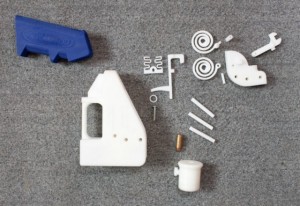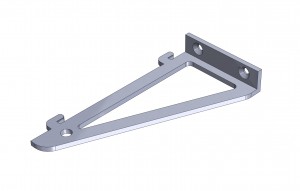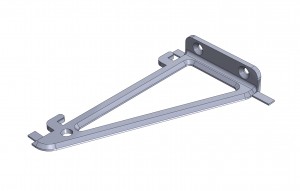 With all the advances in 3D printing, it was inevitable that someone, someday, would create a 3D printed gun…and that day is here. The only non-plastic parts are the firing pin, and the bullet. Everything else is plastic, printed on a Stratasys Dimension SST 3D printer in ABS…a step above the hobbyist grade 3D printers like the Cube.
With all the advances in 3D printing, it was inevitable that someone, someday, would create a 3D printed gun…and that day is here. The only non-plastic parts are the firing pin, and the bullet. Everything else is plastic, printed on a Stratasys Dimension SST 3D printer in ABS…a step above the hobbyist grade 3D printers like the Cube.
As far as firearms go, this one is pretty crude – it’s a single shot device which must be manually loaded, and a test with a larger caliber bullet resulted in destruction of the gun (the successful test used a .380 caliber round).
So, this is very much an immature product, but represents a huge milestone for the technology. There are those who believe that our species can create amazing technology and regulate it to the point where it is safe for society, but the reality is that technology can be used for both good and bad, and attempts to regulate that are eventually futile.
If you want to download the models yourself, head to DefCAD. I wouldn’t recommend it though…this is a marginal design and really more of a proof of concept…be careful. Note that in the test firings, a string was used to actuate the trigger.
Read more at ExtremeTech.



